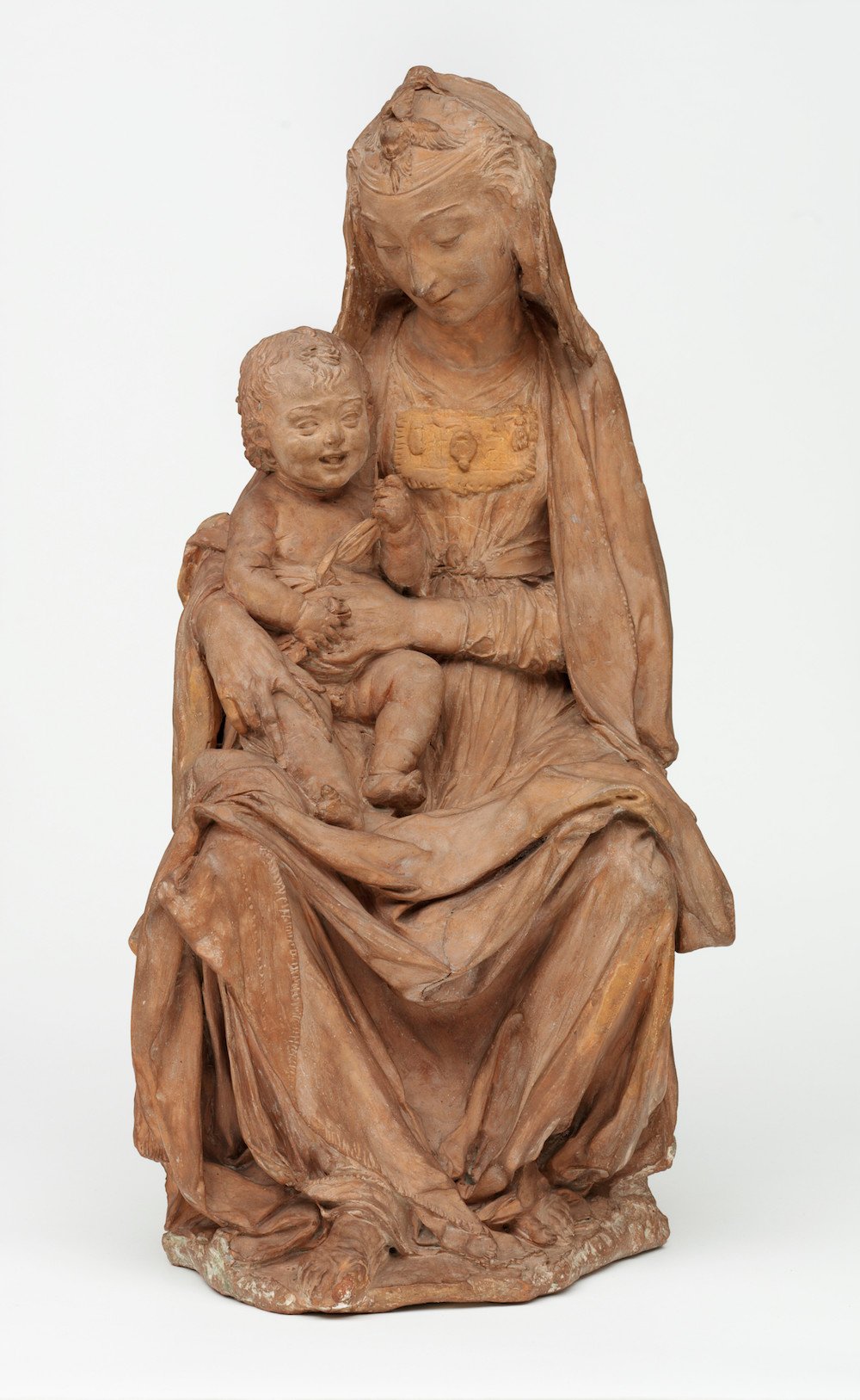
Italian art historians have discovered what they say is the only surviving sculpture by Leonardo da Vinci, The Virgin with the Laughing Child (circa 1472), which they believe was made when the artist was just 19 or 20 years old, while a pupil of the Florentine artist Andrea del Verrocchio.
The sculpture, which has been part of the collection of London’s Victoria and Albert Museum since 1858, has long been attributed to a different artist, Antonio Rossellino. But Naples University professor Francesco Caglioti told the Guardian that scholars have been misled by the late British Museum director John Pope-Hennessy, who attributed the work (and many others) to Rossellino, an artist he promoted heavily.
The sculpture is now on display at Palazzo Strozzi as part of the new exhibition “Verrocchio: Master of Leonardo,” open through July 14. It is attributed to Leonardo with an “unambiguous” label, according to the Guardian.
During last week’s press preview, the nearly 20-inch terracotta sculpture was displayed in a protective vitrine. Caglioti appeared at the event along with Carmen Bambach, an Italian Renaissance expert at the Metropolitan Museum of Art, to explain why he believes the work is by Leonardo.
Leonardo da Vinci expert Francesco Caglioti.
For one thing, he noted that the intricate draperies falling over the Madonna’s legs are similar to drawings of draperies that Leonardo was making at the time. These drawings are also on view in the Palazzo Strozzi show and are described by the Guardian as “almost obsessive studies of abstract folds and shadowy recesses.”
Secondly, the face of the infant Jesus and his realistic pose make him look “alive,” the paper says. The same attention to young children is also evident in the artist’s drawings.
There’s also a mention in one of Leonardo’s notebooks where he describes being reprimanded for a portrayal of the infant Christ, and it would have been considered radical, perhaps even blasphemous, to depict Christ laughing in the 15th century. The paper asks: “Could this be the work that got him in hot water?”
So far, the Victoria and Albert is being cautious about the new designation. It noted in a statement that an attribution to Leonardo was first proposed for the work back in 1899 and has over the years also been attributed to Rossellino, Verrocchio, and Desiderio da Settignano, “none of which has met with universal acceptance.”
“The V&A welcomes ongoing discussion with colleagues worldwide: research into our collections is continuous, and we look forward to further scholarly insight which will no doubt result from this presentation within the upcoming exhibition,” the statement said.
Art historian and blogger Bendor Grosvenor says that the V&A, whose online catalogue still lists the work as by Rossellino, doesn’t always embrace new attributions, particularly those proposed by outsiders. It’s common, he says, for major museums to get “territorial” during matters such as this.
See a preview of the exhibition here.